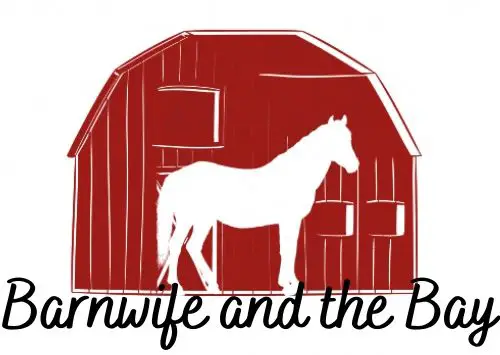
Both snaffle bits and curb bits have a place in western riding and training western horses (and English riding too). But snaffle bits and curb bits function very differently.
It is crucial for riders to know the difference between them and how each bit works in order to pick the right bit to achieve the desired result.
This post may contain affiliate links. See the disclosure for more info.
What is a snaffle bit?
A snaffle bit is any bit that works by direct pressure on a horse’s mouth. When you pull on a rein, the horse feels pressure on his mouth. Depending on the type, this pressure could be on the corners of the lips, bars of the mouth, and/or tongue.
Young horses in early training for western disciplines are usually ridden in a snaffle bit. Later in their training they might transition to a curb. Snaffle bits are also easier to use and understand for novice riders.
How do snaffle bits work on horses?
Snaffle bits transmit signals from the rider’s hands (via the rein) to the horse’s mouth. The reins attach to the bit rings, which are directly attached to the mouthpiece. The action of a snaffle bit puts pressure on different parts of the horse’s mouth.
Anatomy of a snaffle bit
Let’s break down the parts of a snaffle bit.
The mouthpiece is the part of the bit that sits in the horse’s mouth.
It can be unjointed, single-jointed, or double-jointed (or sometimes multi-jointed). It can be straight or curved. Sometimes snaffle bits can also have a port. The function of a port in a snaffle bit is to relieve pressure on the tongue. This is a little bit different than its purpose in a curb bit, discussed below.
The mouthpiece is usually made of stainless steel. However, it is also common to see mouthpieces made of copper, or with copper rollers or copper inlays. Many horses like the taste of metals like copper and aurigan. A copper mouthpiece will usually encourage acceptance of the bit and salivation. Some mouthpieces are also made of plastic or rubber.
The cheek pieces or rings are the sides of the bit at the ends of the mouthpiece. The reins attach to the cheek pieces. Cheek pieces can be different shapes like d-ring, eggbutt, full-cheek or loose-ring.
Any cheek piece can be combined with any mouthpiece.
Problematic snaffle bits
One problem with single-jointed snaffles is the nutcracker effect. When both reins are pulled simultaneously, the two sides of the metal mouthpiece clamp together over the horse’s jaw. This squeeze can be painful. The nutcracker effect can be avoided by using a double-jointed mouthpiece.
The most common types of snaffle bits
There are almost unlimited possibilities for snaffle bits. Here are the most common categories that make up the majority of snaffles in use:
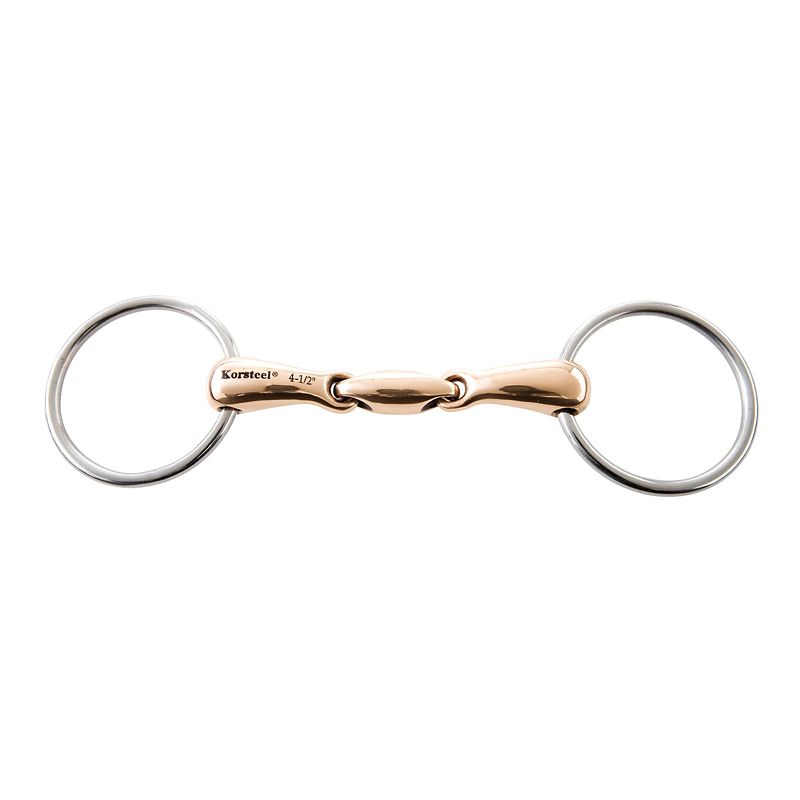
Loose ring snaffle bit. A loose ring bit is the most common bit to start a horse or rider, and even for well-trained western or English horses. The loose rings allow movement of the reins and rings. This softens the aids somewhat.
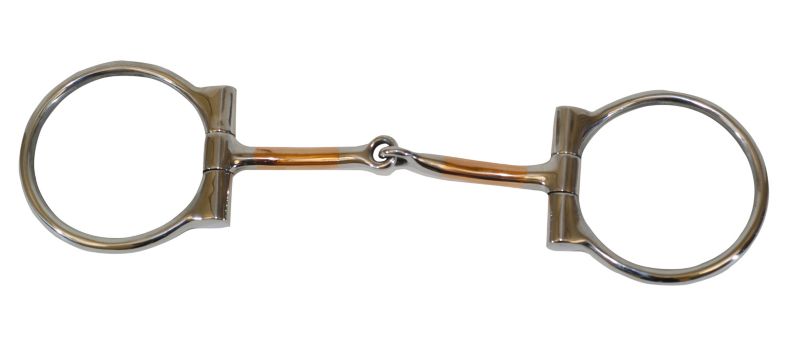
D-ring snaffles. A favorite of western riders, the D-ring allows some movement of the reins on the ring, but no movement of the rings in the mouthpiece. It is a good choice for a horse that needs more help with lateral flexion and steering.
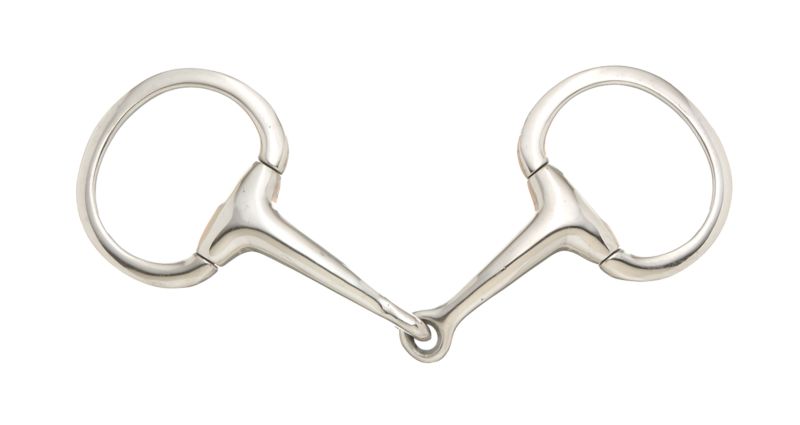
Eggbutt snaffles. Similar to a D-ring, an eggbutt cheekpiece allows some sliding of the reins along the ring and therefore some delay or softening of the rein signal, while giving a firmer lateral pressure on the horse’s lips. An eggbutt snaffle bit is a good option for a horse that has some experience, but still needs some help with lateral flexion.
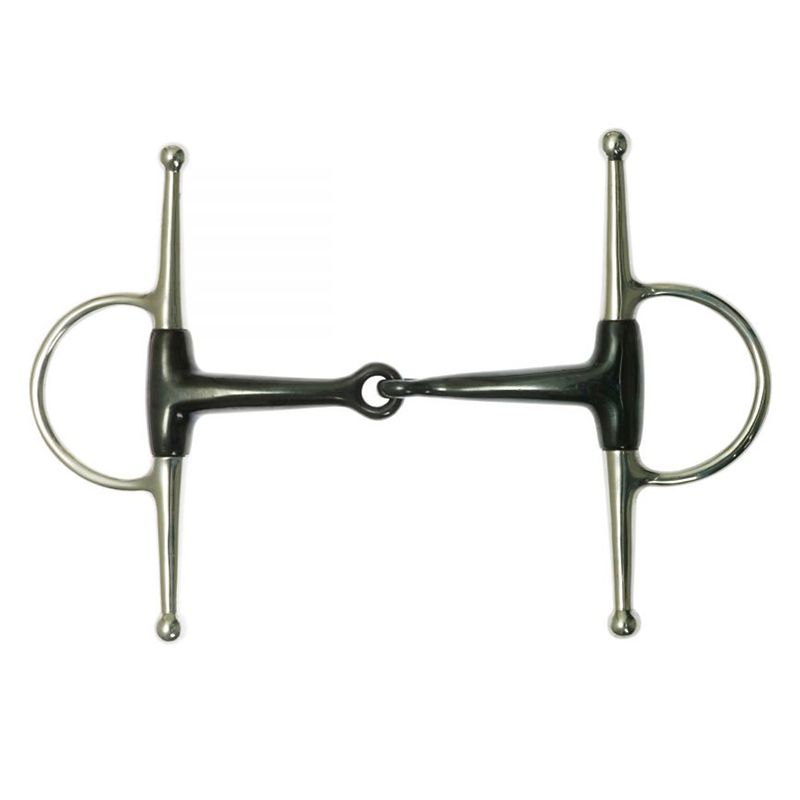
Full cheek snaffle. A full cheek provides even more lateral signal and less play in the rein connection than a loose ring, D ring, or eggbutt.

French link. One of the common double-jointed snaffle mouthpieces, a French link has a flat figure 8 shaped plate in the center. The plate is angled at 45 degrees to the straight portions of the mouthpiece (the canons). This type mouthpiece is a little stronger than a double jointed mouthpiece with a round or lozenge connector.
What is a curb bit?
A curb bit is a bit that works through the action of leverage. When the rider picks up on the reins, the curb chain or curb strap tightens under the horse’s chin, and the shanks rotate, causing pressure on the horse’s poll through the bridle’s headstall.
How do curb bits work on horses?
Curb bits work by using the leverage of the shanks to tighten the curb chain or curb strap under the horse’s chin, while simultaneously putting pressure on the horse’s poll. Many curb bits also put pressure on the roof of the mouth through the action of a port.
A horse that has reached a higher level of training in a western discipline usually graduates to working in a curb bit to master upper level refinement. The skill of understanding how to neck rein is a prerequisite to working in a curb bit for a western horse. A leverage bit is meant to be used with loose reins.
When a horse is working in a curb bit, the control of direction comes from a loose rein against the neck. The action of the bit when the rider tightens the reins encourages the horse to flex at the poll.
Anatomy of a curb bit
Mouthpiece. The mouthpiece of a curb bit is normally not jointed, with some exceptions. There is normally a port.
Cheek pieces. The cheek pieces of a curb bit are usually shanks, especially on western curbs.
The shanks hang down below the mouthpiece. The reins attach to the bottom of the shank. Shanks can be different lengths and can be curved or straight. A longer shank means less pressure on the rein will have a greater effect in the horse’s mouth.
A shorter shank means the horse will feel the signal quicker.
Straight shanks send signals quicker than curved shanks.
The part of the shank above the mouthpiece, where the bridle headstall attaches, is called the purchase. The purchase can also be long or short. A short purchase means the action will be engaged quicker when the rider picks up on the reins.
Shanks can be fixed or hinged (“loose-jawed”) so they can swivel side to side.
Common types of curb bits

Correction mouthpiece. These bits have high ports and add stopping power for a horse that needs extra encouragement to slow down. However they should be used carefully, since the high port can touch the roof of the mouth and could cause damage in the wrong hands.
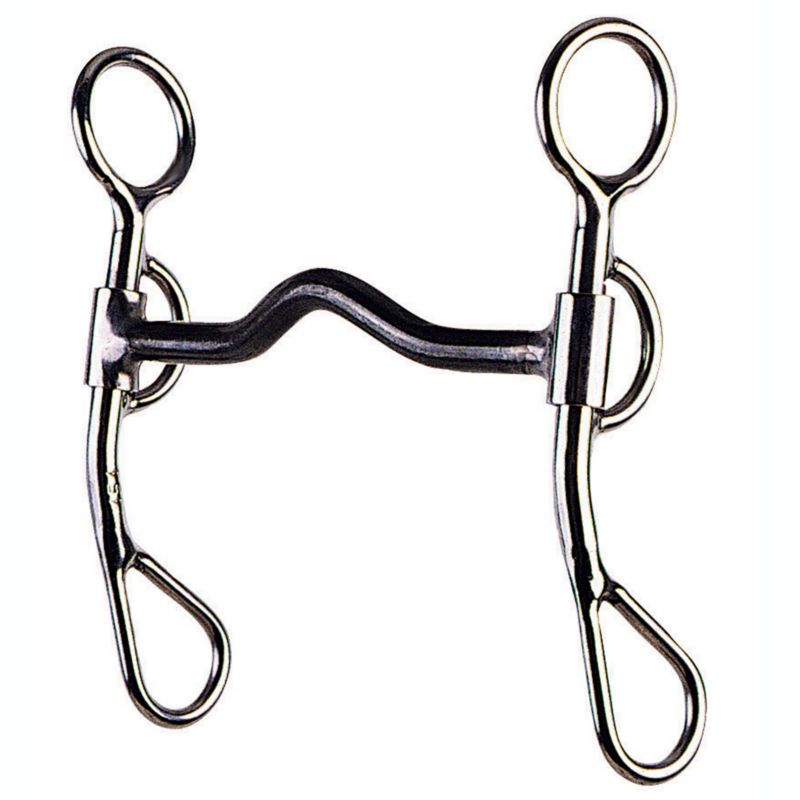
Argentine. The Argentine has a snaffle ring and a short-shanked curb ring. Reins can be attached to either ring for different effects.
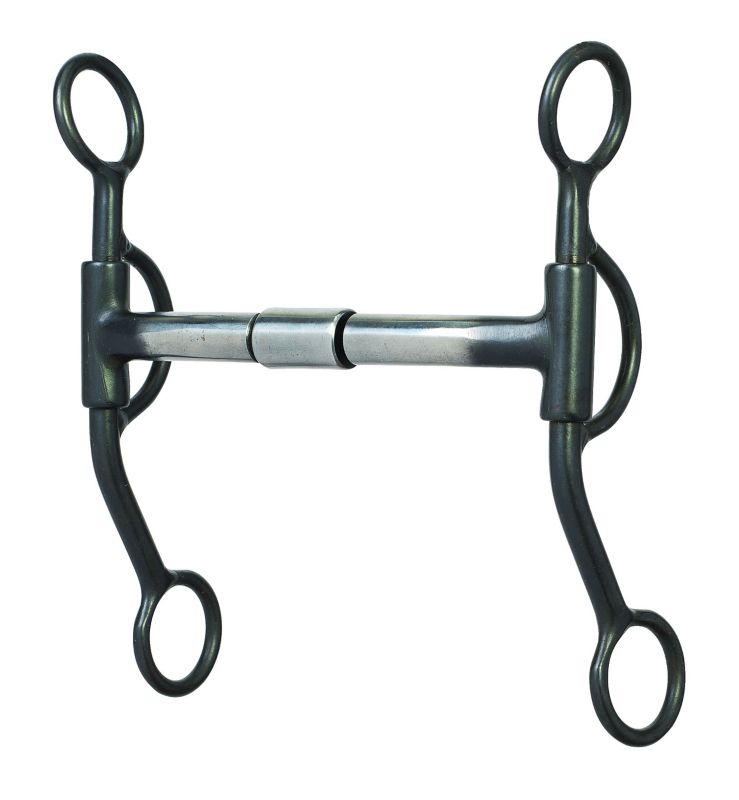
Billy Allen. The Billy Allen also has a snaffle ring and shank ring for different rein attachment options. The mouthpiece is jointed but covered with a barrel, making it a hybrid between a linked and solid mouthpiece.
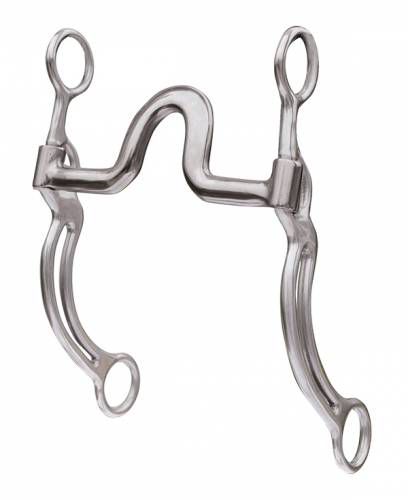
Spoon Mouth or Cathedral Mouth. These bits are for the experienced horse and rider pair only. They have high flat ports which could damage the roof of the mouth if used incorrectly.
Problematic curb bits
Many riders think a Tom Thumb bit is a good intermediate curb choice for a horse that cannot neck rein. This is not true. The combination of a single jointed mouthpiece with swiveling shanks makes it the worst kind of offender for the nutcracker effect.
Even worse, the joint will rotate up and poke the roof of the horse’s mouth when a single rein is engaged. At the same time, the leverage action puts pressure on the poll. This sends two opposite messages to the horse (and likely causes pain).
A western horse must understand neck reining before transitioning to a curb. Instead of a Tom Thumb, consider a Billy Allen or Argentine for the horse transitioning from snaffle to curb.
Fitting a bit
Just like with any piece of tack, it is very important that the bit fits the horse properly. Bits are sized by the length of the mouthpiece (the width of the bit between the cheek pieces). This should match the width of the horse’s mouth at the bars. A well-fitting bit allows no more than a finger-width between the horse’s lip and the cheek piece.

The bit sizer is a device made to get an accurate measure of the horse’s mouth. This way you can avoid buying a bit which later turns out not to fit.
Which is a severe bit and which is gentle
Curb bits are more severe than snaffle bits. They are meant to be used by experienced riders on horses that understand self-carriage. However, there are many types of snaffles that are quite severe, and any bit can cause pain to a horse if used improperly.
In general, any bit that has a twist is severe, especially a “fast twist” that may have sharp edges. The worst of these are single or double twisted wire bits. If you are considering using a wire bit, what you probably need instead is help from a trainer to restart your horse.
In general, a snaffle with a smooth mouthpiece and 1 or 2 joints is relatively gentle. A smooth, double jointed snaffle with a lozenge in the middle is one of the most comfortable snaffle bits for a horse to wear.
Another gentle option is a Myler bit. Myler makes many different kinds of bits, all with their signature curved mouthpiece which is meant to allow room for the tongue.
Conclusion
Both snaffle bits and curb bits will feature in any western rider’s collection, and any western horses training. However, within these two categories there is infinite variation.
While a solid knowledge of how each type of bit works and the features that produce specific effects is a great place to start, it is often just the beginning of the journey to finding the perfect bit for a horse. Riding a horse in many different bits and observing their reactions is the best way to find out which one they like the best. The goal is always a relaxed and focused ride.
Most of the information in this article came from The Ultimate Book of Horse Bits by Emily Esterson. This book is a great resource if you want to dive deeper into all kinds of bits and bitting considerations for all horses and sports.
Jump into more articles about horseback riding:
